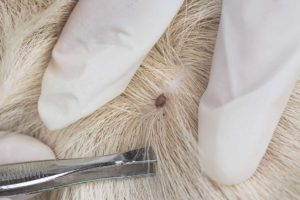Top tips on how to check your pet for ticks
A daily tick check on your dog during tick season (in Australia, this can start as early as spring and run throughout summer) may prevent a serious illness or a fatal disease.
Whenever your pet is outdoors, they risk tick exposure. Grassy, coastal or bushland areas are the most problematic. Ticks in these areas lie in wait on tall grasses and can attach to a host (your pet) as they run past. Performing a tick check is simple – but should be thorough. Petsure’s Masterclass shows you vet-approved ways to examine your pet and exactly where to focus.
FAQs: How to check your pet for ticks – what you need to know
Perform a daily tick check by running your fingers over your dog’s body from the tip of the snout to the tail, underside, and paws to allow you to feel for any small or unusual lumps. If you discover a tick, do not pull it out, as you may risk leaving the head, which can lead to infection, or you may squeeze the tick as you tried to remove it and end up squeezing more toxin into your pet. It is best to take your pet to your vet for proper removal
While a tick check should cover all areas of the body, pay extra attention to your dog’s head. Always thoroughly check around the eyes, nose and mouth, in and around the ears and between the paws. Run your fingers through the fur in both directions to feel for ticks in these areas.
Tick paralysis caused by a species among Australia’s east coast and is caused when a tick feeding on its host injects small amounts of toxic saliva into its host’s bloodstream. Once in the blood, these poisons can lead to weakness and, ultimately, paralysis and can result in death.
Watch for uncoordinated movement and weakness, particularly of the hind legs, but it can progress to all four limbs
· Paralysis – an inability to move
· Noise or difficulty when breathing, coughing, grunting
· Vomiting, gagging, regurgitation, reluctance to eat
· Changes to the pets’ voice
· Changes to the eyes, a reduced ability to blink, pupils that are different sizes
· Droopy eyelid/s, droopy facial features
For more information about ticks:
Protecting your pets from paralysis ticks
Pet insurance can help by covering a portion of the eligible vet bill if the unexpected happens. Because it is difficult to predict the costs of veterinary care, it can help to have measures in place to help prepare for the unexpected. Check out our partner network and explore our policy tools to find a pet insurance policy.
Not all conditions or items are covered by Pet Insurance. Refer to the applicable Product Disclosure Statement for information about coverage and exclusions.



 Fact checked
Fact checked




